
Mastcam-Z’s First Martian Sunset: The first Mastcam-Z image of the Martian sunset acquired from Jezero crater on sol 257 of the mission. Martian sunsets typically stand out for their distinctive blue color. Fine dust in the atmosphere permits blue light to penetrate the atmosphere more efficiently than colors with longer wavelengths. But this sunset looks different: less dust in the atmosphere resulted in a more muted color than average. The color has been calibrated and white-balanced to remove camera artifacts. Credit: NASA/JPL-Caltech/ASU/MSSS
The Perseverance rover is equipped with a large suite of cameras—23 to be exact—which collectively enable a wide range of scientific investigations and engineering activities. Since the rover’s touchdown in Jezero crater, these cameras have served as our eyes on the ground. In less than a year, the rover has already returned thousands of stunning images of local surface features, which have provided our first in situ look at rocks on the crater floor and within the crater’s well-preserved delta. Images obtained from rover cameras are critical for interpreting the crater’s geologic history and identifying potential biosignatures in the Jezero crater rock record, a major focus of the mission.
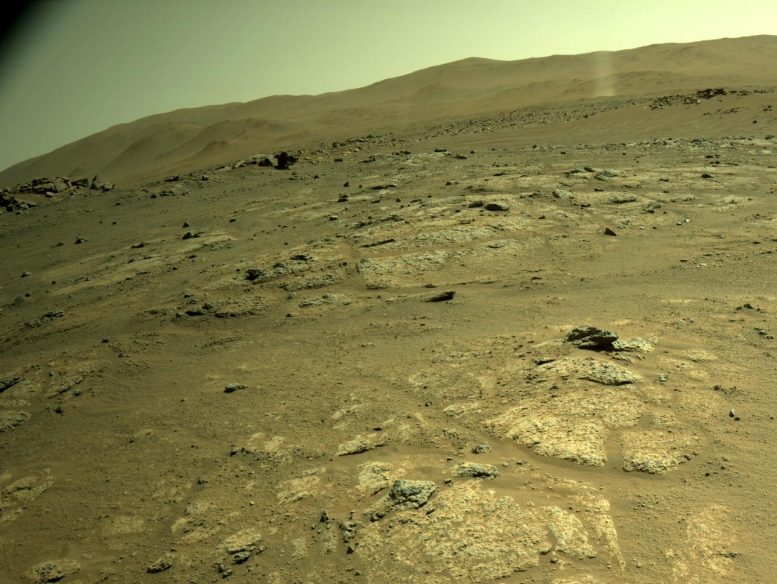
Mars Perseverance Sol 157 – Right Navigation Camera: Navcam image acquired on sol 157 captures an active dust devil in Jezero crater (in top right). Credit: NASA/JPL-Caltech
Yet, these cameras are used to image more than just rocks. Every week, the rover team also acquires a large number of images of the sky and atmosphere around the rover, which allow researchers to study environmental dynamics and weather patterns. The rover’s Navcam is commonly used to search for clouds in the sky and evidence of dust lifting on the surface, such as dust-filled vortices, known as dust devils, and other wind-driven dust events. Images captured from the Mars Environmental Dynamics Analyzer’s SkyCam are frequently used to study atmospheric opacity (tau), which fluctuates depending on the amount of dust in the atmosphere. Typically, between two to four SkyCam images are acquired each sol, deliberately spread across different local times in order to assess diurnal changes in dust loading. Mastcam-Z images are also occasionally used to supplement SkyCam tau observations.

This series of images from a navigation camera aboard NASA’s Perseverance rover shows a gust of wind sweeping dust across the Martian plain beyond the rover’s tracks on June 18, 2021 (the 117th sol, or Martian day, of the mission). Credit: NASA/JPL-Caltech
Over the last two weeks alone (sol 263–276), more than 60 atmospheric-focused activities have been conducted using rover cameras, including over 40 SkyCam images, roughly 10 Navcam dust devil observations, a handful of Navcam cloud images, and over a dozen Mastcam-Z tau images. On sol 257, one of these Mastcam-Z images provided a serendipitous observation: while the last of four tau images was scheduled too late in the evening to be used for opacity measurements, it was well-timed to provide the first sunset image of the mission.
For the remainder of Perseverance’s exploration of Jezero crater, the rover team will continue to regularly collect atmospheric observations to study weather and dust-lifting processes. While images of the surface will be used to study local geology and search for signs of ancient life, images of the sky will be used to characterize the Martian climate and to prepare for future human exploration of Mars.
Written by Mariah Baker, Planetary Scientist at Smithsonian National Air & Space Museum.

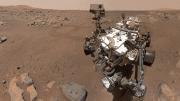
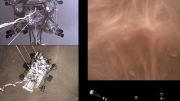
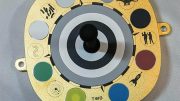
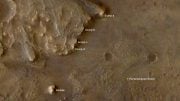

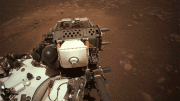
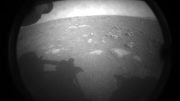
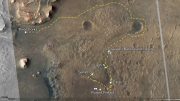
Be the first to comment on "NASA’s Perseverance Mars Rover Captures Stunning Martian Sunset and Valuable Science Images"